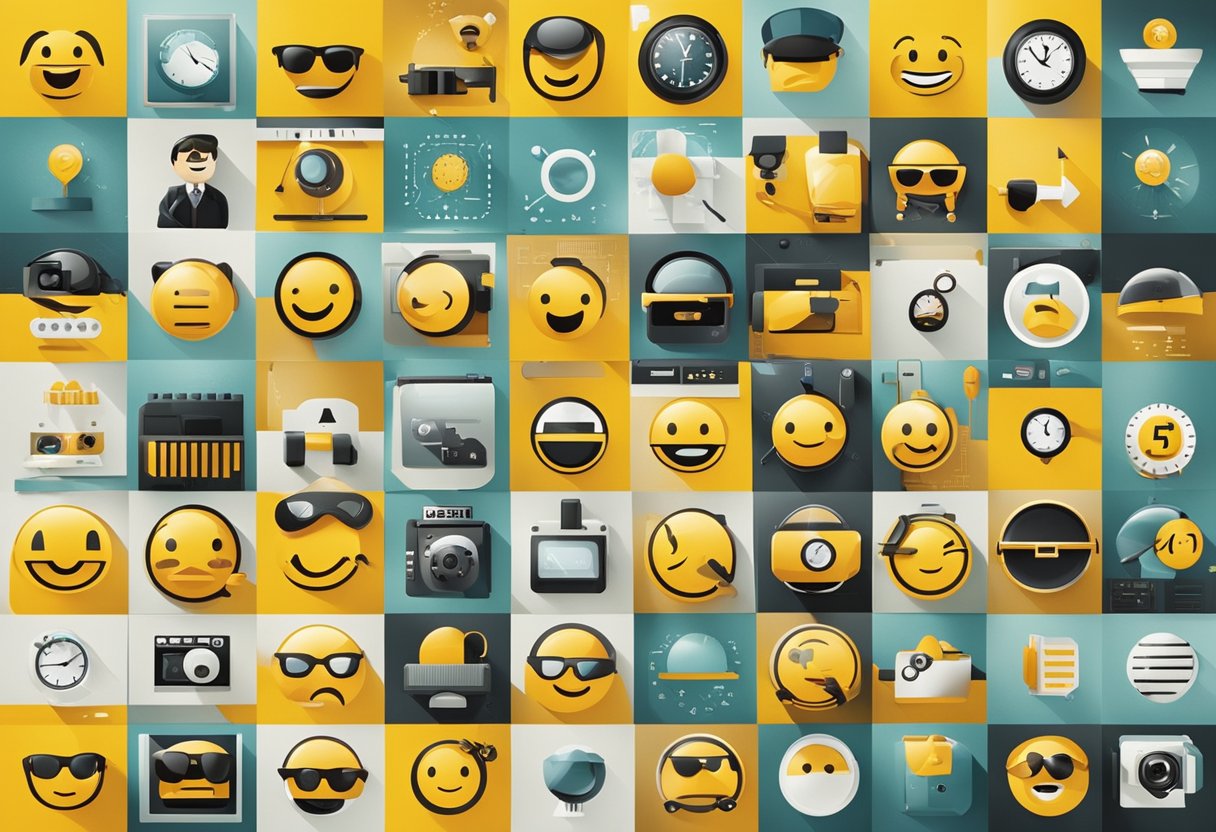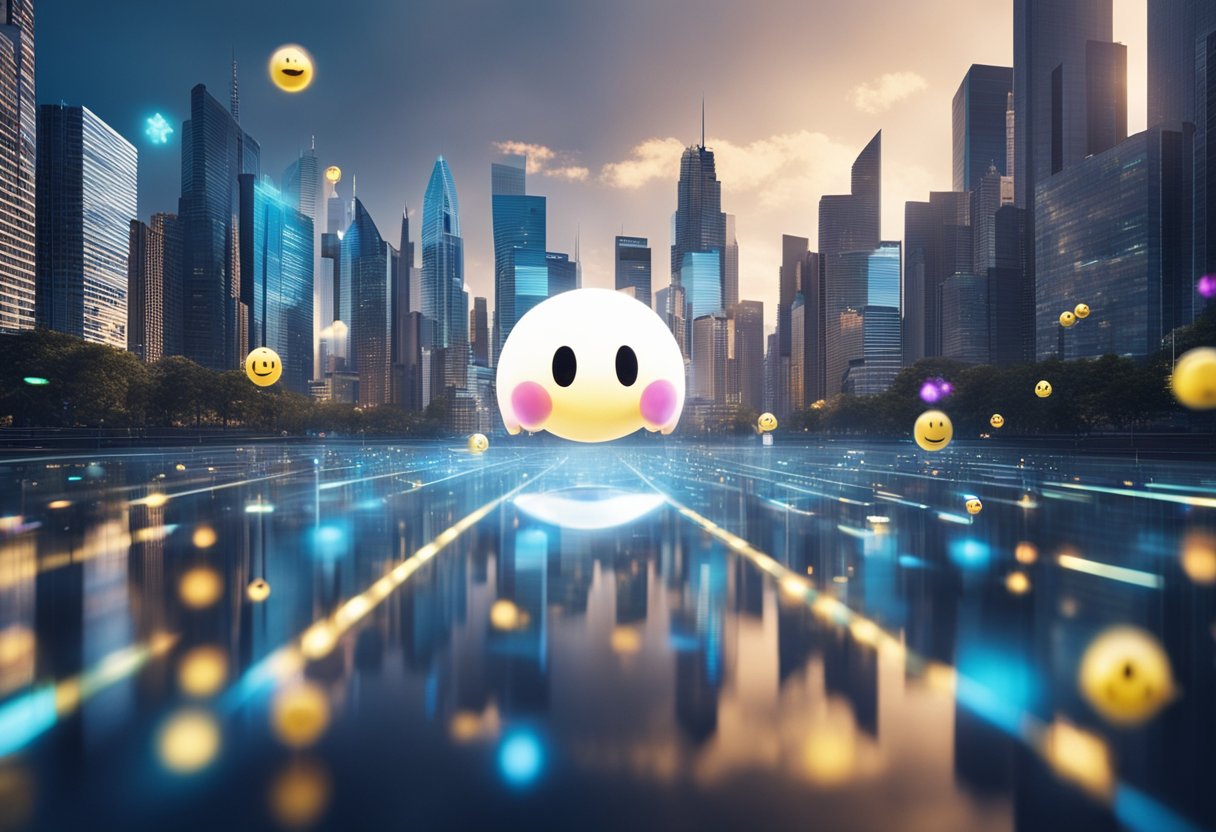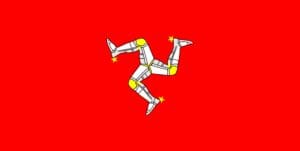Pictograms and Emojis: Tracing the Progression of Symbolic Communication

Updated On: April 15, 2024 by Panseih Gharib
The journey from ancient pictograms to emojis, is the journey from carved into rock faces to the colourful and expressively varied emojis on our digital screens and a testament to the persistent human need to communicate visually. Pictograms, simple images used to convey messages or information, represent the earliest forms of writing and communication. As societies advanced, these symbols transformed and multiplied, embedding themselves into the fabric of our collective communication. Emojis, the modern successors to these ancient signs, offer a sophisticated palette of emotions and concepts, enabling quick and nuanced expression in an increasingly digital world.

Visual language, consisting of both pictograms and emojis, has become a ubiquitous part of our daily digital exchanges, reflecting not just our immediate emotions but also a unique cultural significance. Through technological advances, such as the role of Unicode in standardising the characters we use, visual language has evolved into a dynamic form of communication that transcends linguistic barriers. It acts as a mirror, reflecting the changing nature of interaction, expression, and identity within the context of our globally connected community.
Historical Progression of Visual Language
Visual language has transformed dramatically from ancient scripts to the digital icons we use today. Our journey through visual communication reflects a rich tapestry of human expression and innovation.
From Hieroglyphs to Emoji
Egyptian hieroglyphs, one of the earliest writing systems, were intricate symbols representing both sounds and concepts. Hieroglyphs were used in monumental and sacred writings, with each symbol conveying specific meanings. These visual representations laid the foundation for other ancient scripts, such as cuneiform, developed by the Sumerians of Mesopotamia. Composed of wedge-shaped marks on clay tablets, cuneiform was one of the first forms of writing to use a reed stylus, evidencing the evolution of tools in visual language.
As civilisations evolved, so did their scripts. The alphabet, an influential development in the history of writing, transitioned from complex symbols to a set of a few dozen characters representing individual sounds. This advancement made writing more accessible and widespread. The simplicity and flexibility of alphabetic systems made them enduring and adaptable, influencing numerous languages and cultures across the globe.
Digital Technology’s Role
Digital technology has sparked a new revolution in visual language, embodied by the rise of emoji language. Emojis, originally developed on mobile internet platforms in Japan, are now a ubiquitous form of global digital communication. These modern pictograms convey emotions, concepts, and messages through simple, colourful designs. Digital communication’s rapid pace and the need for concise expression have led emojis to become a universal visual shorthand, transcending language barriers.
The proliferation of digital technology has ensured that emojis are constantly evolving, adding new icons that reflect contemporary culture and communication needs. Our smartphones and the internet have become vehicles for this new visual language, demonstrating the profound impact digital technology has on the way we convey information and emotion in our interconnected world.
The Essence of Pictograms and Emojis
In our discussion, we’ll explore the fundamentals of visual symbols used for expression, namely pictograms and emojis, highlighting their core aspects and relationship to one another.
Defining Pictograms and Emojis
Pictograms are the simplest form of visual communication, originating from ancient times where they signified objects and concepts through representative drawings. These symbols have been used across various cultures to convey information through a universal medium that predates written language. Emojis, on the other hand, are modern-day pictograms, digital icons used to express emotions, ideas, or objects in electronic communication. Originating in Japan, emojis have become a widely adopted form of expression across the globe, providing a quick and effective way to communicate emotions and reactions in text-based conversations.
Differences and Similarities
Pictograms and emojis, while stemming from the same desire to communicate visually, have distinct differences. Pictograms are often used in public spaces for informative or regulatory purposes, such as road signs or information symbols. Their design is typically straightforward and universally understood, prioritising clarity over emotion. Emojis, conversely, are more characterful, often representing emotions, activities, or reactions, and are primarily used in personal communication.
However, the similarity lies in their function: both use imagery to convey messages beyond the limitation of language barriers. Pictograms and emojis enable communication across diverse languages and cultures, relying on shared human experiences and emotions for comprehension. Both serve as integral components of visual language, expanding our ability to express complexity through simple visual means.
Cultural Impact and Expression
Visual language is rapidly evolving due to emojis, which greatly impact cultural expression and facilitate tone and emotion in our digital communications. They serve not only as a means to express feelings but also as a symbol of cultural epitomes, shaping an emoji language that’s gaining global traction.
Global Reach and Cultural Expression
We can see that emojis have transcended their Japanese origin, becoming a world-wide emoji language that encapsulates a variety of human emotions and cultural significances. The cross-cultural impact of emojis is apparent; they are being adapted and integrated into multiple cultures around the globe, creating a unique form of cultural expression that is universally understood.
- Universality: Enabling expression beyond linguistic barriers.
- Adaptability: Reflecting a wide range of cultural nuances.
Emojis represent more than just emotional responses; they foster a sense of community and identity among various cultural demographics. This linguistic revolution has also accounted for cultural differences, further enhancing global communication.
Emojis as Cultural Epitomes
Emojis often act as epitomes of cultural phenomena, capturing the essence of cultural idiosyncrasies and traditions. From the food we eat to the festivals we celebrate, these colourful symbols provide a snapshot of our cultural landscapes.
- Iconography: Manifesting cultural icons and practices.
- Expression: Conveying beliefs, values, and attitudes inherent to specific cultures.
Indeed, as noted in insights on the evolution of emojis, these icons encapsulate our emotions, expressions, and activities, becoming a visual shorthand for our daily experiences and cultural signifiers. Through this emerging emoji language, we are witnessing a form of cultural expression that is dynamic, inclusive, and ever-evolving.
Emotional Expression in the Digital Age
In this digital era, expressing emotions through text has been transformed by the advent of emojis and pictograms. They serve as tools to convey meaning, tone, and emotional nuances that are often lost in digital communication.
Conveying Emotions through Emojis and Pictograms
Emojis and pictograms have become integral to digital communication, allowing us to express a wide range of emotions quickly and effectively. The first emojis, designed by Shigetaka Kurita in 1999, were a breakthrough in electronic communication, offering people a way to infuse their text messages with clearer emotional context. These icons evolved into the colourful and complex emojis we have today, encompassing not just facial expressions but a vast array of symbols for objects, activities, and concepts. They help us bridge the gap created by the lack of physical cues in digital messaging.
Facial Expressions and Icons
Facial expressions, the universal language of emotion, have been distilled into iconic forms through emojis. From the simple smiley face to more complex representations of nuanced feelings, these icons can illustrate happiness, sadness, anger, and more. They enable us to mirror our facial expressions in our text-based communication, conveying our state of mind and reactions in a conversation, enhancing the clarity of our intent without the need for elaborate verbal explanations.
Tone and Intent
The tone of a message can often be misinterpreted in digital communication, leading to confusion and misunderstanding. Emojis serve as indicators of tone and intent, adding an emotional layer to our messages that helps avoid such pitfalls. Emoticons, the precursors to emojis, combined keyboard characters to express feelings, but emojis offer a richer, more diverse vocabulary for emotional expression. They can add elements of humour, sarcasm, excitement, or affection, providing a simple yet profound way to enrich our digital interactions and ensure our true intent is conveyed.
The Role of Unicode and Standardisation
In our exploration of visual language evolution, the advent of Unicode and its global standardisation efforts prove pivotal. These technical strides have reshaped how we communicate across the digital expanse.
Understanding Unicode
Unicode serves as a fundamental framework for text representation in computing systems, offering a unique code point for every character regardless of the platform, programme, or language. This universal code system not only simplifies the processing and exchange of text but also ensures that it appears the same on different devices. Unicode’s role extends to the standardisation of visual language elements such as emojis, ensuring that a smiley face or any other symbol retains its intended appearance and meaning, irrespective of where it’s viewed.
- Emojis: Unicode assigns a specific code to each one, enabling consistent display across different environments
- Characters: From alphabetic to special characters, each is given a unique Unicode ensuring error-free transmission
The Unicode Consortium
The Unicode Consortium is an organisation dedicated to developing and promoting the Unicode Standard. Composed of a multitude of members ranging from large corporations to individual contributors, this consortium collaborates on the design and standardisation of the Unicode to support a vast array of languages and scripts.
- Standardisation: Constantly evolving to include a wider range of characters and emojis
- Design: Collaborates with members to ensure appropriate representation and inclusivity in the symbols included in the Unicode Standard
Through a meticulous process that combines industry needs with cultural sensitivity, the Unicode Consortium is central in guiding the visual language evolution to ensure that it remains as universally accessible as it is expressive.
Visual Writing Systems
In our examination of visual communication, we turn our focus to how pictograms have evolved into more complex forms such as emojis, incorporating grammar and structure to form complete sentences and ideas.
Pictomojis and Hybrid Fonts
Pictomojis represent the blend of traditional text characters with pictorial images to enrich visual communication. These letter-sized pictograms are part of a hybrid pictorial font, allowing individuals to convey concepts such as ‘I’, ‘You’, ‘Have’, and ‘Want’ in a more visual manner. While early pictograms were simple images representing objects or concepts, pictomojis are part of a larger shift towards a comprehensive visual writing system that transcends cultural and linguistic boundaries.
Structure and Grammar of Emoji Language
When we consider the structure and grammar of emoji language, it’s important to understand that this emerging form of communication relies on the arrangement of emojis to create full sentences and coherent messages. Unlike traditional writing systems, emoji grammar is less fixed and often relies on the contextual and cultural interpretation of the images. However, as this visual language develops, there are discernible patterns in how emojis are sequenced to convey complex ideas, similar to how spoken and written languages develop syntax and grammar norms.
Usage of Emojis in Communication
The integration of emojis into our digital dialogue has led to nuanced ways of expression, adding layers to the traditional structure of language used in emails and chats.
Emojis in Emails and Chats
In the realm of emails and chats, emojis serve as catalysts for emotional expression, providing a bridge between the written word and the tone often missing from digital communication. They break the limitation of vocabulary, enabling us to inject personality and sentiment into otherwise neutral text. For instance, a simple smiley can soften a request, or a thumbs-up emoji can replace phrases of agreement, making our intent clearer.
The employment of these visual symbols allows the natural flow of language to adapt, offering connecting phrases through imagery. Moreover, language has found a partner in emojis, as they successfully complement the text to enrich our articulation and understanding of context.
Beyond Traditional Grammar
Emojis are steering us beyond traditional grammar by providing a visual shorthand for complex emotions and actions. As digital communication evolves, so does the importance of conciseness and speed, with emojis often taking the place of lengthy descriptions. Our natural language use within emails and instant messaging is adapting, as these icons provide immediate clarity and tonal cues which might otherwise be lost.
Furthermore, the array of available emojis represents a rapidly expanding vocabulary in its own right. They allow users to transcend language barriers and communicate universally recognisable concepts, showcasing the transformative potential of emojis in fostering global connections.
Artistic and Creative Aspects
We observe that the transition from pictograms to emojis represents not only a linguistic shift but also a creative revolution with far-reaching impacts on art and design. As we explore the artistic nuances and the potential for personal expression within this modern visual language, it’s essential to consider how these symbols are shaped and the opportunities they provide for individual creativity.
Design and Aesthetics
The design of emojis is grounded in the principles of simplicity and visual appeal. Each emoji serves as a microcosm of art, encapsulating a wealth of meaning in a digestible, graphical form that is attractive to read and visually engaging. Our crafting of emojis makes them accessible to diverse audiences by using universally recognisable cues—ensuring that these symbols carry clear messages across different cultures and languages.
- Colour: Utilised to evoke emotions and highlight features
- Shape: Simplified to ensure recognisability and ease of interpretation
- Detail: Balanced to convey the essence without overwhelming the viewer
Creativity and Personalisation
Emojis afford us a remarkable opportunity for personalisation, allowing individuals to express creativity in their digital communications. Each emoji can be thought of as a brushstroke in the larger canvas of our online interactions.
- Combination: Users can combine emojis to create unique messages or even narratives.
- Adaptation: The context in which emojis are used can imbue them with personalised meanings.
Through the creative use of emojis, we add a layer of personality to our messages, transforming ordinary texts into vibrant, emotionally expressive conversations. The evolution of this visual language continually offers new ways for expression and personalised communication, effectively turning each user into an artist of the digital age.
Technological Advancements and Emoji Design

In our exploration of visual language, we consider how technological innovations foster the progression of emoji design. Let us unpack the eras, styles, and advancements that underpin this evolution.
Evolution of Emoji Design
The emoji as we know it began with Shigetaka Kurita in 1999, who created a suite of 176 simple images prompting a seismic shift in digital communication. Initially limited by the pixel density of devices, these rudimentary icons conveyed information succinctly. With advancements in digital technology and display resolutions, emoji design has progressed considerably. We’ve witnessed a transition from basic line drawings to the more sophisticated, realistic style that leverages vibrant colours and shading effects, mirroring the complexities of human emotion and the natural world.
- 1999: Shigetaka Kurita develops the first emojis for mobile phones
- Early 2000s: Emoji adoption in various operating systems begins
- 2010s: Unicode standardisation process enhances cross-platform consistency
- Present: High-resolution displays allow for more detailed and expressive designs
Impact of Digital Displays
The quality of digital displays plays a crucial role in emoji design. With each leap in pixel density, designers gain a new playground to create intricate and expressive images. Older displays restricted emoji to block-like figures, while contemporary high-resolution screens enable a richer portrayal of textures and subtexts. This marks a shift from utility to an artistic expression, embracing emojis not only as a means to communicate but also as an art form appreciated across different devices and platforms.
- Low-resolution displays: Limited to simple, iconic representations
- High-resolution displays: Able to support elaborate and nuanced designs
The conversation surrounding emojis transcends idle chatter about pictographs. As we further integrate digital technology into every facet of our lives, the quality, design, and usage of emojis will continue to be an integral part of our evolution in digital communication.
Emojis in Economy and Marketing
Incorporating emojis into economic activities and marketing strategies has shown a remarkable influence in today’s business world, reflecting a nuanced understanding of the visual language’s power.
Commercial Use of Emojis
In the sphere of the economy, emojis are more than mere adornments; they serve as a universal language bridging communication gaps. Companies in various sectors, like house sales, use emojis to denote features, space, and ambiance, thereby providing potential buyers a quick snapshot of the property. Hotels enhance their customer interaction by utilising emojis in their feedback and rating systems, which simplifies and encourages customer responses.
Businesses have also recognised the potential of emojis to make financial transactions more engaging. Payment platforms integrate emojis to categorise spending, making personal finance both accessible and enjoyable for users, ultimately assisting in better budget management.
Emoji Branding Strategies
Marketing executives are increasingly deploying emojis to speak directly to their demographics. The clever integration of emojis assists in crafting brand identity, giving a company a youthful and relatable personality. Emojis facilitate a brand’s narrative to be concise yet emotive, especially when targeting digital-native audiences.
Healthcare entities, for example, hospitals, leverage emojis in public health campaigns, making complex medical information more digestible and shareable. This strategic use of visual language can lead to increased awareness and better health outcomes.
From a marketing perspective, emojis open up new avenues in advertising campaigns, with brands often launching their custom emojis to capture consumer interest and forge a unique identity. This customisation not only garners attention but also fosters a sense of community among consumers who use and share the brand-specific imagery.
Future Prospects and Experimental Practice
As we explore the trajectory of visual communication, our focus turns to the innovation in emoji usage and the experimental efforts shaping the future of this visual language.
Emerging Trends in Emoji Use
Emojis have transcended from simple pictograms to complex visual phrases capable of conveying nuanced emotion and even love. The further development of this digital phenomenon embraces the idea of creating more intricate and diverse forms of expression. As new trends surface, we see the potential for emojis to form complete sentences and convey broad concepts, potentially evolving into a full-fledged language that can transcend cultural barriers and enhance digital interactions across the globe.
Experimental Linguistics and Pictograms
In the realm of experimental practice, linguists are tirelessly working to expand the possibilities of pictograms. By crafting visual representations of abstract concepts, researchers aim to test the limits of visual language. Through careful examination, we’ve identified that emojis can enable users to emphasise sentiments and ideas, providing experimental evidence that pictorial symbols can be just as effective as words when used in the correct context. The continuing research in this field is bound to unlock innovative methods of communication that might redefine how we understand and use imagery to interact.
Frequently Asked Questions
In this section, we answer some of the most common queries about the role of emojis in the digital age and their impact on communication.
How have emojis transformed modern communication methods?
Emojis serve as a universal language that bridges linguistic gaps, allowing us to express emotions, clarify intent, and add personality to our digital messages. They have become shorthand symbols that can convey complex messages succinctly.
In what ways do emojis influence the psychology of communication?
Using emojis can affect the way our messages are perceived; they can soften blunt text, emphasise joy or frustration, and are key in adding emotional depth to our communication that might otherwise be misinterpreted.
What are the potential negative consequences of relying on emojis in messaging?
An overreliance on emojis might lead to misunderstandings because of the ambiguity in interpretation, and sometimes they may undermine the seriousness of a conversation or the professionalism expected in certain contexts.
Are emojis enhancing or degrading the quality of digital conversations?
Emojis enhance digital conversations by injecting non-verbal elements into text, mirroring face-to-face interactions. However, this can sometimes lead to a degradation of language complexity and nuance.
To what extent can the semiotics theory be applied to the use of emojis?
Semiotics theory is directly applicable to emojis because they are signs that represent an idea or feeling; the meaning of an emoji, like any other sign, is interpreted by the receiver within context.
How is the evolution of emojis reflecting the development of a new visual language?
The evolution of emojis is indicative of a burgeoning visual language which is reshaping our written communication by integrating pictographic elements that echo the earliest forms of human expression.






